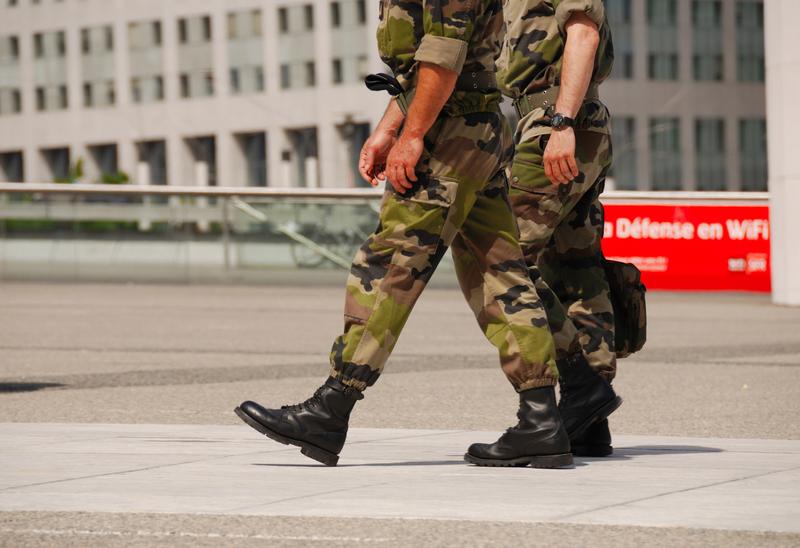This page has been automatically translated. Please refer to the page in French if needed.
Internal security
The Vigipirate plan is upgraded to the Emergency Attack level
Publié le 25 mars 2024 - Directorate for Legal and Administrative Information (Prime Minister)
Following the terrorist attack in Moscow on 22 March 2024, Prime Minister Gabriel Attal announced that the “Attack Emergency” level was declared nationwide. This is the highest alert level in the Vigipirate plan. Service-Public.fr Reminds you of the nature of each of the three alert levels: “Vigilance”, “Enhanced Security - Attack Risk”, “Attack Emergency”.

The Emergency Attack level of the Vigipirate Plan was declared on March 22, 2024, following the Islamic State terrorist organization’s claim to attack Moscow and to address threats to France. This state of vigilance and maximum protection is introduced for a limited period: the time of crisis management. It may be declared throughout the national territory or within a defined geographical area.
This alert level makes it possible in particular to ensure an exceptional mobilization of resources (soldiers of the Sentinel Force...), but also to disseminate information likely to protect citizens in a crisis situation.
Among the measures that may apply with the Emergency Attack level:
- access controls for persons and vehicles can be strengthened in public buildings;
- a visual check of the bags may be carried out at the entrance to schools, and in the event of refusal the school principal or school head may refuse the person in question access to the building;
- places of worship may be subject to enhanced surveillance.
What are the other two alert levels?
Vigilance
This level corresponds to the permanent security posture valid at any place and at any time and to a series of 100 permanent security measures such as the surveillance of transport and public places or the control of access to public sites.
Enhanced Security - Attack Risk
This level is triggered when there is a high level of terrorist threat. It affects the whole territory or targets a particular geographical area or sector of activity and does not have a defined time limit. It provides for the reinforcement of permanent security measures and the activation of additional measures according to the areas concerned by the threat (airports, stations, places of worship, etc.).
Prepare, Prevent, Respond, Manage
The implementation of the Vigipirate plan is based on 3 main principles:
- assess the terrorist threat in France and against French nationals and interests abroad;
- Understand the vulnerabilities of the main potential targets of terrorist attack to reduce them.
- determine a safety device that meets the level of risk.
The intelligence services assess the terrorist threat, and their analyzes enable the General Secretariat for Defense and National Security (SGDSN) to establish, among other things, the general security measures to be implemented.
The whole of Vigipirate device submitted by RDSN includes, inter alia, information for
- prepare (know the configuration of the places where people live and the sites usually frequented, identify the emergency exits, observe its environment especially in places of high affluence, know the emergency numbers, train for first aid gestures...);
- prevent (reporting cases of radicalization, prevention of violent acts and reporting of suspicious situations);
- Respond (what to do in the event of an armed attack, cyber attack or toxic attack).
- managing the post-terrorist attack (witness or victim of a terrorist attack).
FYI
The Vigipirate Plan contains 300 measures covering 13 policy areas:
- alert and mobilization;
- gatherings;
- facilities and buildings;
- hazardous installations and materials;
- cybersecurity;
- air sector;
- maritime and inland waterway sector;
- land transport;
- health;
- food chain;
- networks (communications, water, electricity, hydrocarbons, gas);
- border controls;
- protection of French nationals and interests abroad.
Additional topics
Prime Minister
Prime Minister
Prime Minister
Prime Minister
Prime Minister
Agenda
Déplacements
À partir du 1 mai 2024
Publié le 26 avril 2024
Impôts
À partir du 11 avr. 2024
Publié le 11 avril 2024
Prévention Covid-19
À partir du 15 avr. 2024
Publié le 18 mars 2024
Calendrier scolaire
Du 6 avr. au 12 mai 2024
Publié le 15 mars 2024

